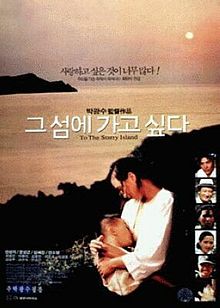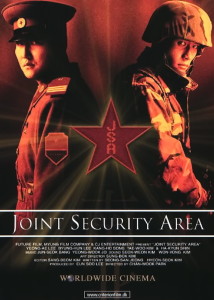The Incoherence of Bong Joon Ho
Film school was crucial to the formation of the Korean New Wave and the type of film that came out of it. It developed a new mindset for later Korean filmmakers, one which was more progressive and innovative than earlier filmmakers. So, in the midst of examining this era of cinema in Korea, I think it might be interesting to take a short look at some of the work that came out of university. To do this, I’m going to look at director Bong Joon Ho’s (The Host, Snowpiercer) graduate film from the Korean Academy of Film Arts, Incoherence.
Incoherence is actually a series of short films about three respectable men who make bad choices, and the consequences of those choices. Made in 1994 when Bong was only 25 years old, Incoherence shows many traits that Bong would go on to use in his future career. Black humour, clashing tones, and slower moments all come up in each episode and are fundamental to Bong’s cinema. Luckily the whole project is on Youtube so let’s get going with episode 1, Cockroach.
Also on KultScene: Cosmetic Hallyu: Glow Recipe Helps Understand Korean Skin Care
Cockroach follows a university professor who after leaving a copy of Penthouse in plain sight on his desk, sends a young female student of his to fetch some other papers on his desk. When he realises what he has done he rushes dramatically to stop her.
There is undoubtedly a simple style being used here, it’s evident that it is an early film of Bong’s. That does not mean it is not as interesting however, as the simplicity of this film is what makes it work. The slow, meditative opening lulls us into an easy feeling and we expect a film that reflects this. This is immediately contrasted with the odd image of this respectable looking man reading a porn magazine. The tone is again heightened when he has to run to his office. His sprint is shot in slow motion to make it seem more dramatic than it really is. This showcases the type of fun Bong likes to have with audiences’ expectations when it comes to the apparent tone of a scene.
Episode two is called Up The Alleys and is about a jogger who steals milk from a porch daily, but one day gives some to a newspaper boy who gets caught by the owner of the house. The newspaper boy then chases the jogger through the maze like alleys of the small village in a comically slow fashion as he still has to deliver his papers.
Up The Alleys has a similar comic feeling to Cockroach but this time we see the consequences of the protagonists actions laid out before us in an orderly way. The paperboy first gets scolded by the old lady so he gets angry and wants to get revenge on the jogger. This causes the jogger himself to have a hard time running away from a spritely young boy. The old lady too loses out because she cancels her newspaper subscription due to a misunderstanding. Lastly the jogger is also shown to also feel the consequences because of his actions in the epilogue of the film.
Also on KultScene: Artist Spotlight: Giriboy
The third episode, The Night Of Pain, shows a drunken suit-wearing man and his desperate search for a toilet in the middle of the night. When he finally finds a way to relieve himself despite the resistance of a security guard, the man decides to take revenge on the guard for treating him like a commoner. He shouts at the guard “Do you know who I am?”
The humour works best in this episode and it’s down to the great acting from the lead. He stumbles, mumbles, and shouts his way through a drunken stupor with glee, not holding back in favour of subtlety. The photography is also more varied as Bong uses a shot of pipes as the opener and brings the same shot back once the symbolic nature of it is known to us. Like in the other two episodes Bong lingers on some shots longer than most short films would, allowing us more time with the characters. It helps us better understand their nights and days of pain.
Like I said before, these three episodes come together in an epilogue which cannot be embedded so you can watch it here.
In the epilogue we see a television show about the moral crisis in Korean society. The guests discussing this are the three protagonists from the previous episodes. The professor is a social psychology teacher, the jogger is editor-in-chief of the Daily Chosun and the drunk man is a public prosecutor. Each of them talk about their disdain for the current state of Korean society and its loose morals.
They each hilariously comment negatively about the very wrong doings they committed themselves. The professor says there is too much sex and violence in today’s media and declares happily that the Korean version of Penthouse was banned. The public prosecutor talks of how minor violations like jaywalking and public urination are a problem. The editor just repeats that the problem starts with education and the home life in between taking drinks of milk. The camera then cuts back to reveal the paperboy who was set up by the editor, going about his daily life. It then shows the other two characters involved in episodes 1 and 3 doing the same as the televisions play in the background. These final shots showing that these important, respectable men have really no idea what life is like for the average person. They are themselves the moral crisis of Korea.
Incoherence is a great introduction to the career of Bong Joon Ho. Not only is it an interesting work in itself, it also maps out many details that show up in his later films, in which these details are executed even better than they are here. It also provides a good look at a student film, which is where many of the big players in the new wave cut their filmmaking teeth. The vast improvement from this to his later work is apparent and gives us an insight into how a director grows.
I’m going to take a closer look into the career of Bong in the coming weeks as he certainly warrants it, and he is my favourite of the lot. But first let me know what you think of Incoherence and if there is anything you’d like to know with regards to the Korean New Wave.
Share your thoughts in the comment section below and be sure to subscribe to the site and follow us on Facebook, Twitter, Instagram, and Tumblr to keep up with all of our posts.



